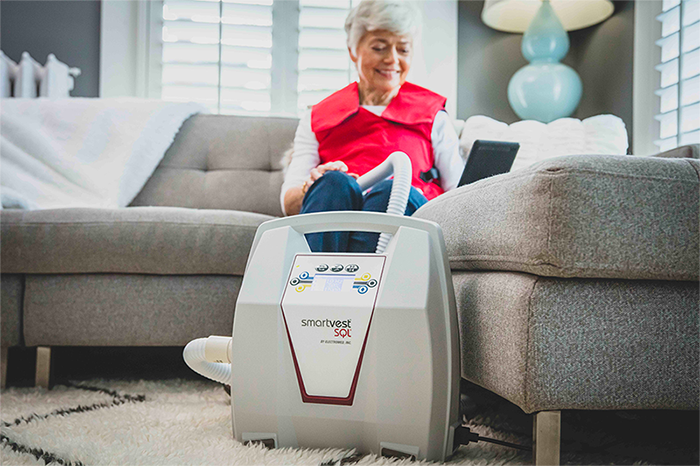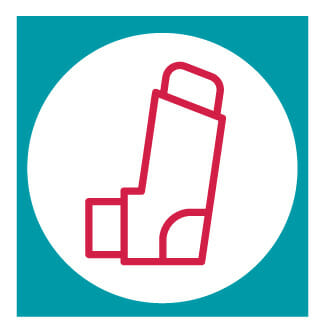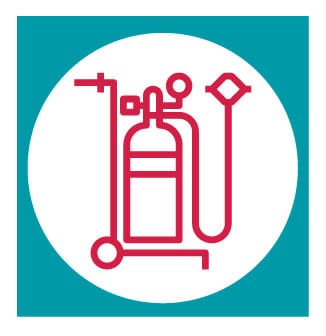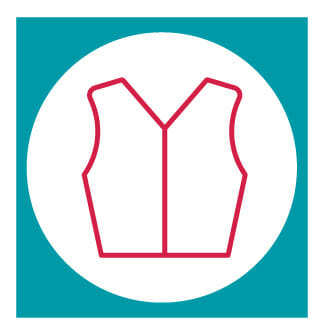
We all experience breathlessness for different reasons: playing tag with our grandchildren, working out at the local gym, or even going for a walk on a humid, 90-degree day can cause anyone to feel out of breath. Shortness of breath is not only an uncomfortable experience, but it’s also an unsettling one.
If you’re living with a chronic lung condition, such as asthma, COPD, or bronchiectasis, breathlessness (i.e., dyspnea),[1] can occur even when you’re not engaging in physical activities. You may experience shortness of breath suddenly (known as acute breathlessness) or over a long period of time (known as chronic breathlessness).[2]
Before we discuss ways to help you manage your breathlessness, let’s first examine what causes a person to experience shortness of breath.
What Causes Breathlessness?
When we exert our bodies, either by running or performing a strenuous activity, it’s normal to feel out of breath: “Increased activity leads to faster breathing, which brings oxygen into the body to help lower building levels of carbon dioxide…[and] once a normal level of carbon dioxide is reached, breathing usually returns to normal.”[3]
The two main organs responsible for transporting oxygen to your tissue and removing carbon dioxide are the heart and the lungs.[4] So, if you’re experiencing difficulty breathing over a long period of time, it may be due to an underlying heart or lung condition that is preventing the natural flow of oxygen.
In terms of bronchiectasis, shortness of breath is a common symptom—next to wheezing and tightness of chest.[5] Similar to COPD, bronchiectasis obstructs the airways, making breathing more difficult. And if left untreated, symptoms like breathlessness or wheezing may worsen over time.
Other common causes of breathlessness may include:
- Exposure to tobacco smoke (first or second-hand)
- Exposure to chemicals, fumes, or pollutants
- Dust, pollen, and other allergens
- High altitudes
- Anxiety or stress[6]
It’s important to note that exposure to these common causes of breathlessness may also trigger a worsening of COPD and bronchiectasis symptoms, too.
How to Manage Breathlessness
Just as every person is different, your treatment plan will depend on several factors[7]:
- Your health history
- The duration of your symptoms (acute breathless chronic breathlessness)
- Whether your breathlessness is accompanied by other symptoms
For instance, if your breathlessness is accompanied by symptoms associated with a chronic lung condition, your doctor may prescribe one or a combination of the following treatments:
Medicated Inhalers
Inhalers are often prescribed to help treat chronic lung conditions like COPD and asthma, as they deliver the medication directly into the patient’s lungs. Common inhalers may include bronchodilators, which help relax the muscles and expand the airways to make breathing easier, or glucocorticosteroids, a steroid treatment that helps open up the airways and reduce inflammation that may be narrowing the bronchi.[8]
Oxygen Therapy
“Oxygen therapy may be prescribed for you when you have a condition that causes your blood oxygen levels to be too low. Low blood oxygen may make you feel short of breath, tired, or confused, and can damage your body.”[9]
Depending on your symptoms, oxygen therapy may be prescribed for long-term use at home.
Breathing Techniques
When we experience shortness of breath, it’s easy to start feeling anxious and tense our bodies, which can keep air trapped in the airways. By practicing a few simple breathing exercises on a daily basis, such as the huff cough[10], pursed-lip breathing, or abdominal breathing, you can train yourself to slow down the pace of your breathing so that it is more controlled and effective.
Vest Therapy
Respiratory vest therapy, or high frequency chest wall oscillation (HFCWO) therapy, may be prescribed if your shortness of breath is accompanied by other symptoms, including mucus buildup, recurring respiratory infections, and chronic inflammation.
 The SmartVest Airway Clearance System, for example, works by delivering repeated pulses of air that gently squeeze and release the upper body. The oscillation helps loosen mucus and propel it upwards so it can be coughed out more easily, helping to prevent infections. This type of treatment is effective because it helps your lungs perform the essential task of removing mucus, so you can breathe easier and live better.
The SmartVest Airway Clearance System, for example, works by delivering repeated pulses of air that gently squeeze and release the upper body. The oscillation helps loosen mucus and propel it upwards so it can be coughed out more easily, helping to prevent infections. This type of treatment is effective because it helps your lungs perform the essential task of removing mucus, so you can breathe easier and live better.
Your Source for Airway Clearance Resources
If you’re experiencing chronic breathlessness, contact your doctor, as this may be a symptom of a more serious condition. The best way to protect your lungs is by early intervention.
For more information on effective airway clearance, stay connected to our blog for new resources and tips.
Resources
[1] Medical News Today. “What Is Dyspnea?” Retrieved from https://www.medicalnewstoday.com/articles/314963
[2] Mayo Clinic. “Shortness of Breath: Causes.” Retrieved from https://www.mayoclinic.org/symptoms/shortness-of-breath/basics/causes/sym-20050890
[3] Livestrong.com. “4 Ways to Reduce Shortness of Breath When Running.” Retrieved from https://www.livestrong.com/article/211590-what-causes-shortness-of-breath-when-running/
[4] Mayo Clinic. “Shortness of Breath: Causes.” Retrieved from https://www.mayoclinic.org/symptoms/shortness-of-breath/basics/causes/sym-20050890
[5] American Lung Association. “Bronchiectasis Symptoms and Diagnosis.” Retrieved from https://www.lung.org/lung-health-diseases/lung-disease-lookup/bronchiectasis/symptoms-diagnosis
[6] Medical News Today. “What Is Dyspnea?” Retrieved from https://www.medicalnewstoday.com/articles/314963
[7] American Lung Association. “Diagnosing and Treating Shortness of Breath.” Retrieved from https://www.lung.org/lung-health-diseases/wellness/shortness-of-breath/diagnosing-treating
[8] Medical News Today. What Types of Inhalers Are Available for COPD?” Retrieved from https://www.medicalnewstoday.com/articles/315766
[9] National Heart, Lung, and Blood Institute. “Oxygen Therapy.” Retrieved from https://www.nhlbi.nih.gov/health-topics/oxygen-therapy
[10] American Thoracic Society. “Treating Bronchiectasis.” Retrieved from https://www.thoracic.org/patients/patient-resources/resources/bronchiectasis.pdf




